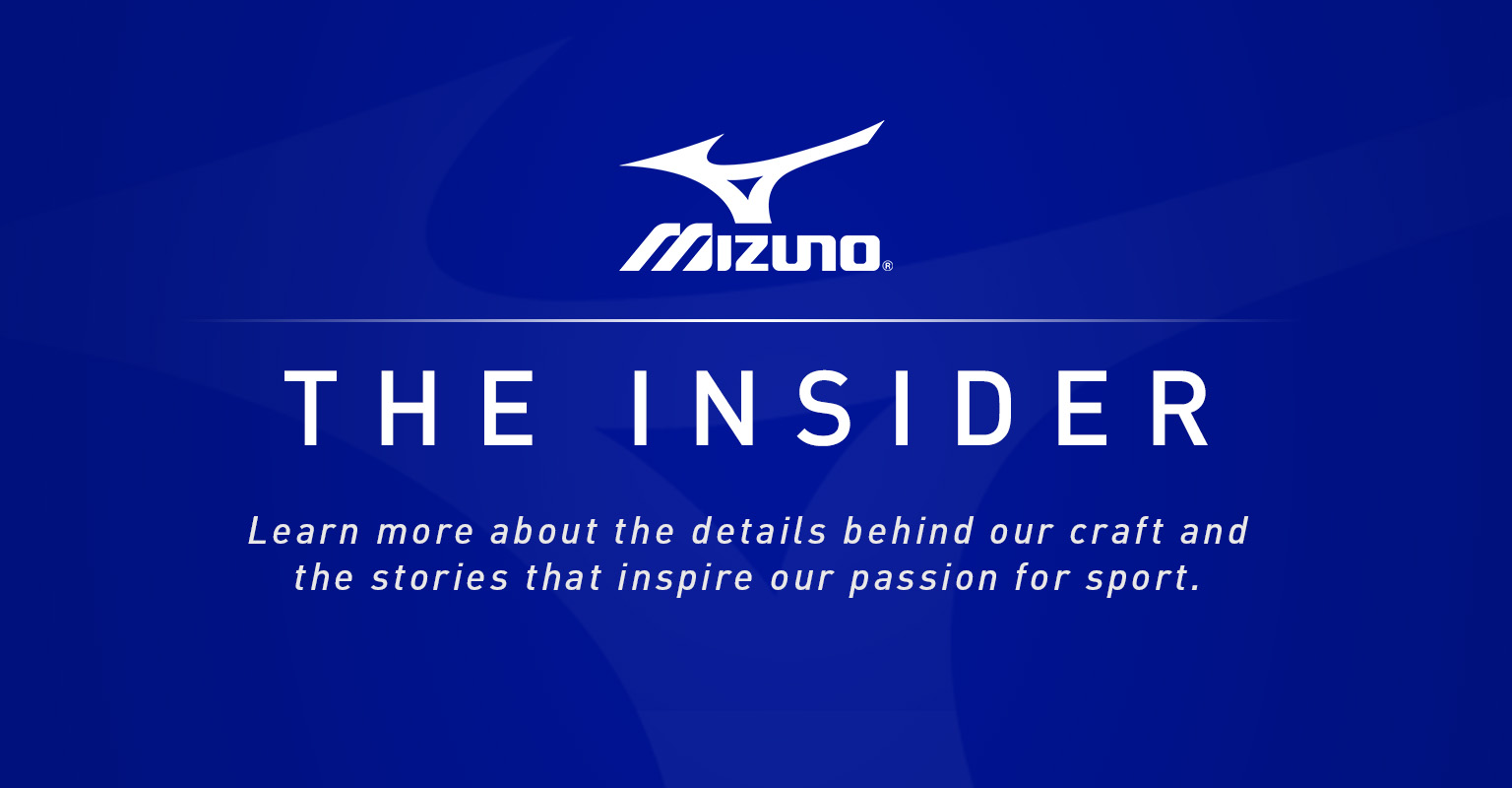
In the sporting goods industry, there are many brand logos that are immediately recognizable however, there is one logo that has gained greater global recognition in the last decade. A beautiful, free-flowing, graphic emblem of the Mizuno brand, the RunBird. It is more than just a logo for adorning shoes, apparel, and gear. The RunBird symbolizes Mizuno’s belief in the Japanese concept of a universal approach to sports with unlimited space and energy.
Prior to the RunBird, Mizuno had used a distinctive large “M” logo. Due to trademark challenges and the feeling that the “M” was too similar to a competitor’s three stripe logo, it was deemed Mizuno needed a more modern symbol that embodied the company’s expansive view of sports.
In 1980, the task of putting this abstract concept in to a practical, recognizable logo was given to Noboru Kono, an R&D division leader at Mizuno Corporation headquarters in Osaka, Japan at that time. Joining the Mizuno family in 1973, Kono was the perfect choice for the project. He understood the passion of Mizuno, work ethic, culture, and dedication to craftsmanship better than anyone else.
Kono’s assignment to design a new logo for Mizuno began in early 1980 as part of an internal plan which was called the “New Line Project”.
The design team went to work and ultimately came up with more than 180 different logos and trademarks. All were rejected because they weren’t unique enough or simply were judged to be unrepresentative of the “planetary” look Mizuno sought to achieve. At some point during this lengthy design process, Kenjiro Mizuno, then the president of Mizuno Corporation, paid a visit to the New Line Project group to contribute his thoughts.
“The universe expands boundlessly and stores and radiates energy. I hope that sports would expand wider and wider and that Mizuno also would store energy and bring its capabilities into full play,” shared Kenjiro.
With Kenjiro’s inspirational words in their minds, Kono and his designers began drawing the orbits of planets and tried to define the orbits in a graphic, dynamic way that would express sports in a free, yet vigorous concept. It was a tall order, but the designers worked tirelessly to create a new design concept that would express those ideas.
Through this process, the New Line Project team defined three primary design elements that would be incorporated in the new logo and symbolize the concepts expressed by Kenjiro Mizuno:
- The RunBird line stands for “boundless expanse and dynamism of sports.”
- The RunBird line means our shoes have “a sense of speed and feel of strength” as well as “tenderness and flexibility.”
- Finally, the RunBird line “improves the feel of fitness, possesses shape retention capabilities, increases durability and gives emanation of energy to the shoes.”
“We did get our inspiration for the RunBird from the unlimited space and energy of the universe. We wanted to take that and illustrate the planetary orbits to create a feeling of sports and its expanse. It was important to us to design a logo that not only reflected those feelings but also served a functional role on the shoes, ” said Kono.
After more than a year of work, Kono and the New Line Project group decided on two separate words that embodied their design concept: Run which equated to health and sports and Bird which in Japan has symbolic roots in the expansion of free spirits.
Putting all the elements together into an attractive and dynamic logo was difficult and work intensive, but the RunBird as we know it first began to take shape in late, 1981. The group went through hundreds of more drawings and sketches of the RunBird before ultimately deciding on the now familiar avian design that today graces all Mizuno footwear, equipment, and clothing.
The RunBird we have today improves the fit of our shoes, prevents deformation and increases our shoes’ durability. We also think it quickens the shoes as well as beautifies them,” said Kono who retired from Mizuno in 2009 at the age of 60.
Upon seeing the finished product for the first time, Masato Mizuno, then Chairman of the Mizuno Corporation and current CEO of the Tokyo 2020 Olympics, was immediately impressed with the exciting new design, stating, “Birds called roadrunners exist. Our shoes now look like running birds.”
Somewhat surprisingly, the RunBird made its international debut in the United States in 1982, a year before it appeared in Japan.
The first RunBird logo revealed in 1982 was bulkier, the stripes were wider and the Mizuno “M” was placed in the center of the RunBird’s stripes. The final major design decision eliminated the monogram ‘M’ to replace with an inverted triangle to better symbolize the intent of the RunBird’s original concept. The modern-day RunBird had its true unveiling on the world sporting stage at the 1988 Seoul Olympics as gold medalists Carl Lewis, Steve Lewis, Joe DeLoach, and Florence Griffith Joyner wore Mizuno shoes.
Over the ensuing years, the RunBird has been further refined to give it a more aggressive, streamlined look. The speedy, visual RunBird has been widely praised for its clean, striking appeal which has gradually been phased in as the global brand logo for Mizuno with golf being the last to make the switch in 2007. Today, the Mizuno RunBird is prominent on all clothes and footwear worn by world-class athletes as well as those just trying to finish their first marathon, hit their first home run, make a game-winning kill shot or just make par.
The Mizuno RunBird is more than just another brand logo. It signals fitness pursuits and achievements of athletes around the globe.
#ReachBeyond
Published: January 2019
